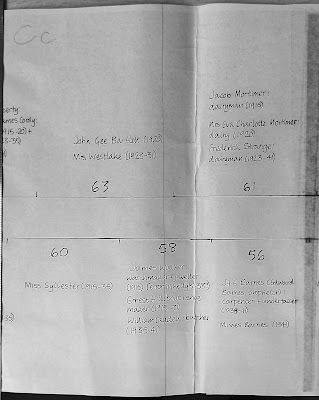
But the clouds of barbarism were gradually dispelled; and the peaceful authority of Martin the Fifth and his successors restored the ornaments of the city as well as the order of the ecclesiastical state. The improvements of Rome, since the fifteenth century, have not been the spontaneous produce of freedom and industry. The first and most natural root of a great city is the labor and populousness of the adjacent country, which supplies the materials of subsistence, of manufactures, and of foreign trade. But the greater part of the Campagna of Rome is reduced to a dreary and desolate wilderness: the overgrown estates of the princes and the clergy are cultivated by the lazy hands of indigent and hopeless vassals; and the scanty harvests are confined or exported for the benefit of a monopoly. A second and more artificial cause of the growth of a metropolis is the residence of a monarch, the expense of a luxurious court, and the tributes of dependent provinces. Those provinces and tributes had been lost in the fall of the empire; and if some streams of the silver of Peru and the gold of Brazil have been attracted by the Vatican, the revenues of the cardinals, the fees of office, the oblations of pilgrims and clients, and the remnant of ecclesiastical taxes, afford a poor and precarious supply, which maintains, however, the idleness of the court and city. The population of Rome, far below the measure of the great capitals of Europe, does not exceed one hundred and seventy thousand inhabitants; 74 and within the spacious enclosure of the walls, the largest portion of the seven hills is overspread with vineyards and ruins. The beauty and splendor of the modern city may be ascribed to the abuses of the government, to the influence of superstition. Each reign (the exceptions are rare) has been marked by the rapid elevation of a new family, enriched by the childish pontiff at the expense of the church and country. The palaces of these fortunate nephews are the most costly monuments of elegance and servitude: the perfect arts of architecture, sculpture, and painting, have been prostituted in their service; and their galleries and gardens are decorated with the most precious works of antiquity, which taste or vanity has prompted them to collect. The ecclesiastical revenues were more decently employed by the popes themselves in the pomp of the Catholic worship; but it is superfluous to enumerate their pious foundations of altars, chapels, and churches, since these lesser stars are eclipsed by the sun of the Vatican, by the dome of St. Peter, the most glorious structure that ever has been applied to the use of religion. The fame of Julius the Second, Leo the Tenth, and Sixtus the Fifth, is accompanied by the superior merit of Bramante and Fontana, of Raphael and Michael Angelo; and the same munificence which had been displayed in palaces and temples was directed with equal zeal to revive and emulate the labors of antiquity. Prostrate obelisks were raised from the ground, and erected in the most conspicuous places; of the eleven aqueducts of the Cæsars and consuls, three were restored; the artificial rivers were conducted over a long series of old, or of new arches, to discharge into marble basins a flood of salubrious and refreshing waters: and the spectator, impatient to ascend the steps of St. Peter's, is detained by a column of Egyptian granite, which rises between two lofty and perpetual fountains, to the height of one hundred and twenty feet. The map, the description, the monuments of ancient Rome, have been elucidated by the diligence of the antiquarian and the student: 75 and the footsteps of heroes, the relics, not of superstition, but of empire, are devoutly visited by a new race of pilgrims from the remote, and once savage countries of the North.
Of these pilgrims, and of every reader, the attention will be excited by a History of the Decline and Fall of the Roman Empire; the greatest, perhaps, and most awful scene in the history of mankind. The various causes and progressive effects are connected with many of the events most interesting in human annals: the artful policy of the Cæsars, who long maintained the name and image of a free republic; the disorders of military despotism; the rise, establishment, and sects of Christianity; the foundation of Constantinople; the division of the monarchy; the invasion and settlements of the Barbarians of Germany and Scythia; the institutions of the civil law; the character and religion of Mahomet; the temporal sovereignty of the popes; the restoration and decay of the Western empire of Charlemagne; the crusades of the Latins in the East: the conquests of the Saracens and Turks; the ruin of the Greek empire; the state and revolutions of Rome in the middle age. The historian may applaud the importance and variety of his subject; but while he is conscious of his own imperfections, he must often accuse the deficiency of his materials. It was among the ruins of the Capitol that I first conceived the idea of a work which has amused and exercised near twenty years of my life, and which, however inadequate to my own wishes, I finally deliver to the curiosity and candor of the public.
Lausanne, June 27 1787
.png)





































.jpg)



_-_Nationalmuseum_-_18771.tif)
















